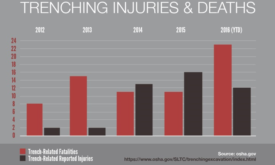Home » accident prevention
Articles Tagged with ''accident prevention''
NSC to employers: Your workers may be especially tired on Monday
As daylight saving time begins, NSC urges organizations to invest in worker sleep health
March 9, 2018
Time to refocus: Odds of accidentally dying are getting worse
National Safety Council digitizes nearly 100 years of injury and fatality data to help Americans understand their greatest safety challenges
March 1, 2018
Never miss the latest news and trends driving the safety industry
eNewsletter | Website | eMagazine
JOIN TODAYCopyright ©2024. All Rights Reserved BNP Media.
Design, CMS, Hosting & Web Development :: ePublishing








